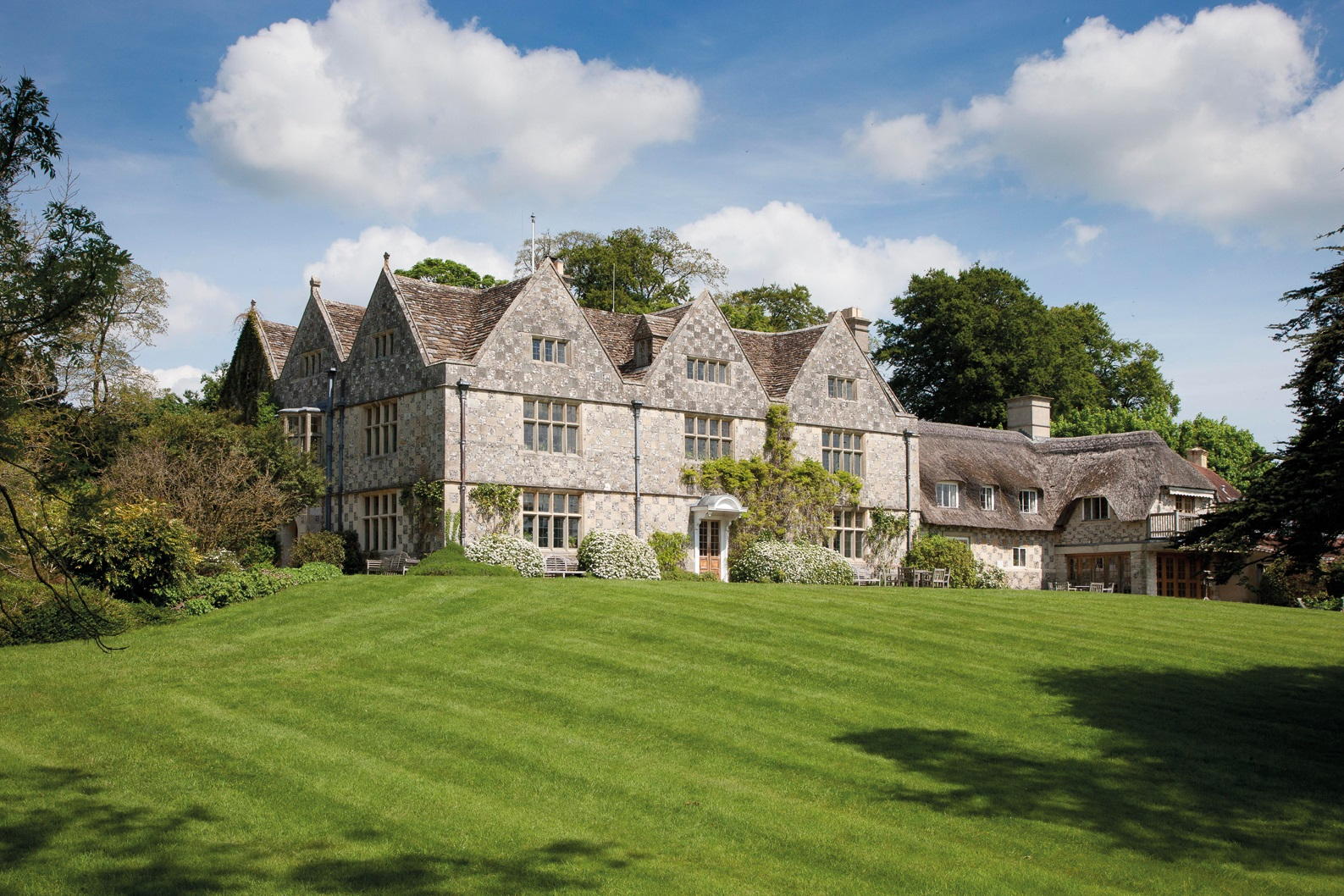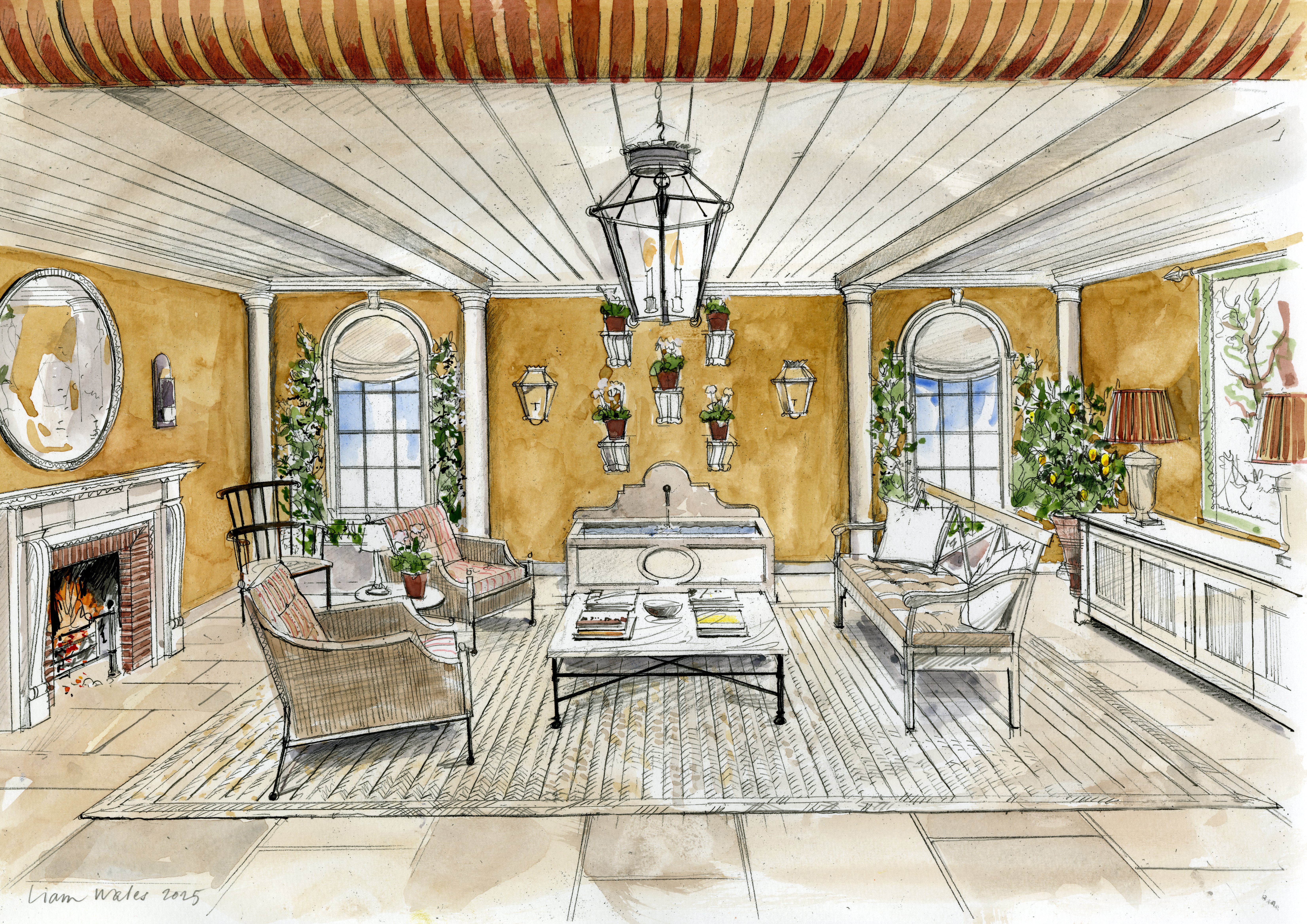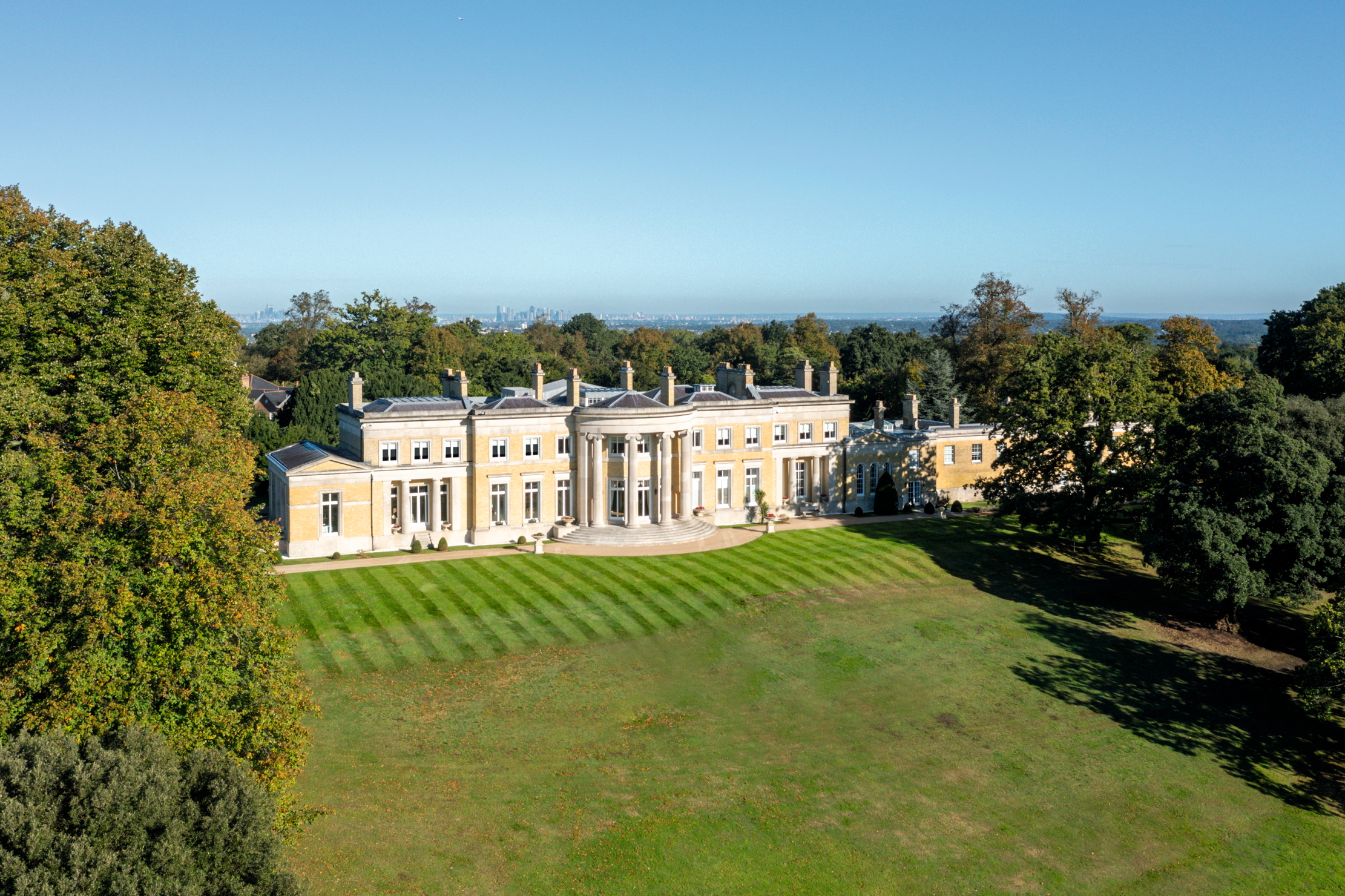A £13 million Wiltshire mansion where Nancy Mitford and Siegfried Sassoon once partied with 'the brightest of the Bright Young Things'
After Wilford Manor's glory days in the 1920s it became a near-wreck with a tree was growing out of one of the bedrooms; today, it's as wonderful as it has ever been in its history, and is seeking a new owner.


The endlessly idyllic Woodford Valley has long been a favoured spot for those looking for a beautiful country home in Wiltshire. So it’s exciting for find a house that sits amid this rolling landscape, with the benefits of the lovely city of Salisbury close by. That house is Wilsford Manor, a fine, Grade II*-listed manor house set in some 54 acres.
On the market with James McKillop of Savills, Wilsford Manor has a guide price of £13m, which buys you the house and the wooded grounds overlooking a lake on the banks of the River Avon, six miles north of Salisbury.

Built between 1904 and 1906 on the site of an older house for Edward Tennant, 1st Lord Glenconner, and his wife, Pamela, the house was the work of the Arts-and-Crafts architect Detmar Blow, who impressed the couple with his reconstruction, following a fire, of another Glenconner manor, nearby Lake House, in 1899.

The striking, 15,800sq ft manor house is built of stone and flint with distinctive chequerboard façades, stone-mullioned windows and a thatched wing. Supporting the main house is a complex of six secondary dwellings and various outbuildings including an enchanting children’s roundhouse, which form a private ‘village’ to the side of the manor and ensure total privacy.

Lord Glenconner died in 1920, and Wilsford Manor later passed to his fourth son, Stephen Tennant, who would become well-known for his flamboyant and decadent lifestyle. Lampooned in the tabloid press of the 1920s and 1930s as ‘the brightest’ of the Bright Young Things, Tennant was regularly visited at Wilsford by his many Society friends, among them Rex Whistler, Cecil Beaton, Edith Sitwell, Nancy Mitford and Siegfried Sassoon, with whom he conducted a long affair.

The gaiety ended with the outbreak of the Second World War, when Wilsford was taken over by the Red Cross and Tennant decamped to the thatched annexe next door.

After the war, Tennant returned to the main house, which, in the face of soaring costs, gradually fell into disrepair and was only saved from complete dereliction by the efforts of devoted house staff. Tennant spent the last years of his life there as a near recluse and died, aged 80, in 1987.
Sign up for the Country Life Newsletter
Exquisite houses, the beauty of Nature, and how to get the most from your life, straight to your inbox.

Wilsford Manor was in a parlous state when, in the early 1990s, it was acquired by the present vendor, who, according to Mr McKillop, ‘found a tree growing out of the main bedroom’ — one of many obstacles he encountered as he embarked on a massive renovation that eventually saw the entire estate restored to its Edwardian splendour.

Original features, such as ornate plasterwork ceilings, oak panelling, beams, staircases and fireplaces, were repaired and reinstated. Discreet modernisation took place with the installation of new security and audio systems. Plumbing, central heating and wiring were all completely renewed.

The house now offers stylish accommodation on three floors, including six principal reception rooms, seven bedrooms and six bathrooms, plus an extensive wine cellar and a leisure complex with an indoor pool, a Turkish hammam, gym and studio.

The best trout fishing on the Avon is to be found upstream of Salisbury, where Wilsford Manor boasts an extensive and exceptionally well-managed upper stretch, of which 908 yards are double bank and 270 yards are single bank.

Those who share the owner’s passion for fly-fishing are said to cherish the timeless beauty of the Wilsford fishery, which, compared with other major English rivers, is generally less manicured, with a wonderfully diverse population, from small, wild species to monsters in double figures.

Among its devotees, in fact, is Country Life’s Editor Mark Hedges: ‘The fishing at Wilsford is indeed very special,’ he says. ‘Among the best trout fishing I’ve ever enjoyed’.
Wilsford Manor is for sale at £13 million — see more details and images.

Credit: Strutt and Parker
Best country houses for sale this week
An irresistible West Country cottage and a magnificent Cumbrian country house make our pick of the finest country houses for

Credit: Highland Games (Getty)
The Highland Games: Dancing, bagpipes and giant men in kilts since 1314
In her 1931 novel Highland Fling, Nancy Mitford described the Highland games at Invertochie as ‘an extraordinary spectacle of apparently

Credit: Alamy
U and Non-U, 60 years on: Is the English language still full of pitfalls?
Is it still true that it's impossible for an Englishman to open his mouth without making some other Englishman despise
-
 Country Life 23 April 2025
Country Life 23 April 2025Country Life 23 April 2025 looks at how to make the most of The Season in Britain: where to go, what to eat, who to look out for and much more.
By Toby Keel Published
-
 The big reveal: A first look at Country Life's RHS Chelsea Flower Show stand
The big reveal: A first look at Country Life's RHS Chelsea Flower Show standInterior designer Isabella Worsley reveals her plans for Country Life’s ‘outdoor drawing room’ at this year’s RHS Chelsea Flower Show.
By Country Life Published
-
 Schreiber House, 'the most significant London townhouse of the second half of the 20th century', is up for sale
Schreiber House, 'the most significant London townhouse of the second half of the 20th century', is up for saleThe five-bedroom Modernist masterpiece sits on the edge of Hampstead Heath.
By Lotte Brundle Published
-
 Is the 'race for space' officially over?
Is the 'race for space' officially over?During the lockdowns, many thought the countryside was the place to be. It seems many are now changing their minds.
By Annabel Dixon Last updated
-
 What's a 'wellness village' and will it tempt you back into the office?
What's a 'wellness village' and will it tempt you back into the office?The team behind London's first mixed-use ‘wellness village’ says it has the magic formula for tempting workers back into offices.
By Annunciata Elwes Published
-
 A mini estate in Kent that's so lovely it once featured in Simon Schama's 'History of Britain'
A mini estate in Kent that's so lovely it once featured in Simon Schama's 'History of Britain'The Paper Mill estate is a picture-postcard in the Garden of England.
By Penny Churchill Published
-
 Hidden excellence in a £7.5 million north London home
Hidden excellence in a £7.5 million north London homeBehind the traditional façades of Provost Road, you will find something very special.
By James Fisher Published
-
 Sip tea and laugh at your neighbours in this seaside Norfolk home with a watchtower
Sip tea and laugh at your neighbours in this seaside Norfolk home with a watchtowerOn Cliff Hill in Gorleston, one home is taller than all the others. It could be yours.
By James Fisher Published
-
 A Grecian masterpiece that might be one of the nation's finest homes comes up for sale in Kent
A Grecian masterpiece that might be one of the nation's finest homes comes up for sale in KentGrade I-listed Holwood House sits in 40 acres of private parkland just 15 miles from central London. It is spectacular.
By Penny Churchill Published
-
 A medieval house with a dozen bedrooms, a Great Hall and its own bar, set amid some of the finest landscapes in England
A medieval house with a dozen bedrooms, a Great Hall and its own bar, set amid some of the finest landscapes in EnglandUpper House in Derbyshire shows why the Kinder landscape was worth fighting for.
By James Fisher Published
